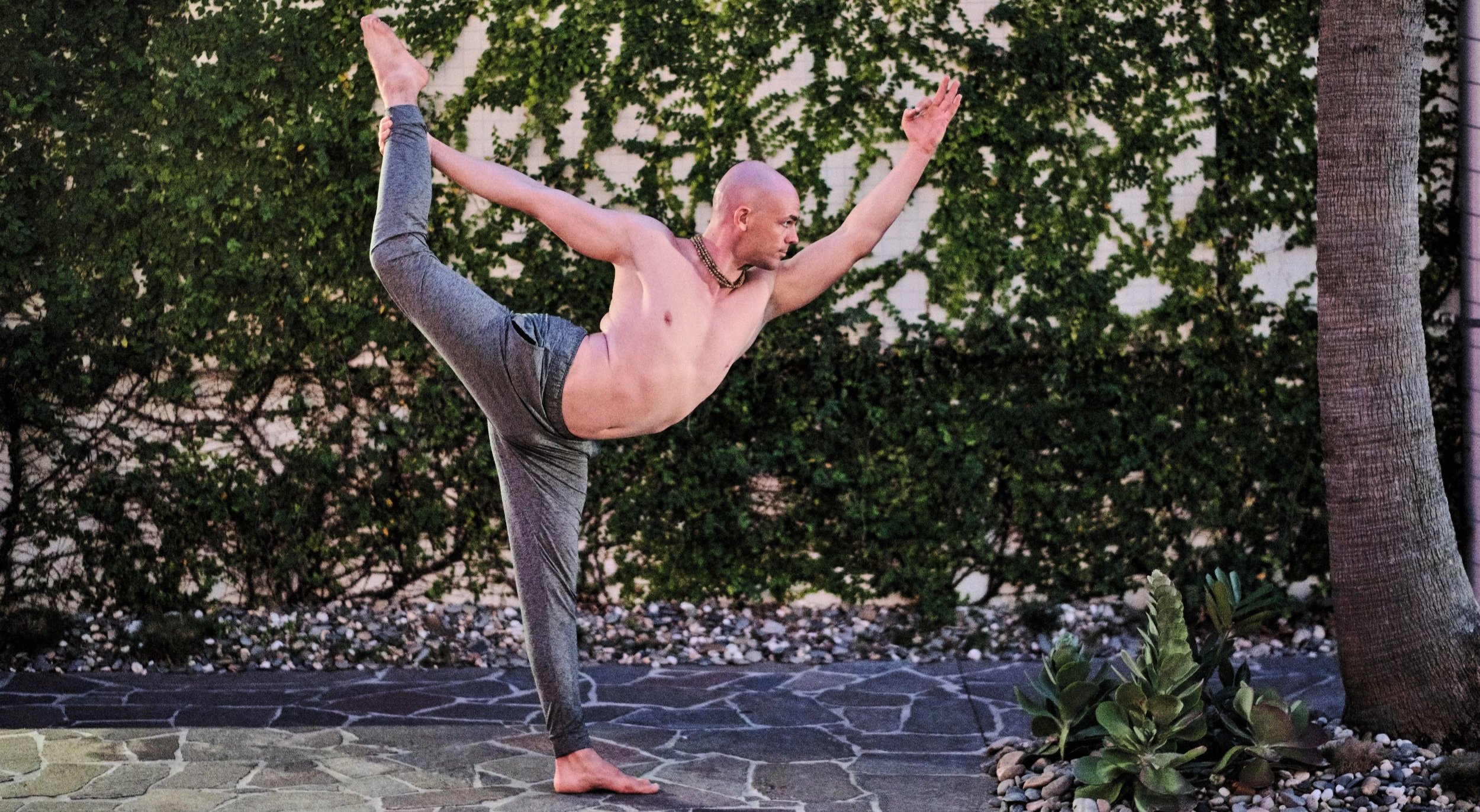Posture of the month: Natarajasana
The dance of life
This June, we will practice Natarajasana as our POM - a beautiful balance posture that doubles as a back bend.
In Sanskrit, the ancient language of the yogis, Natarajasana means 'Dancer’s Pose', from Nata (dancer), Raja (King) and Asana (seat or posture).
Keep reading to hear about its benefits and the beautiful back story surrounding Nataraja, the ‘King of Dance’… Can you guess who we are referring to?
The benefits of practicing Natarajasana
Natarajasana helps you improve your balance on many levels. Beyond the obvious physical balancing, it also brings equilibrium to your mind and increases strength, flexibility and circulation. Here are a few of the benefits this beautiful posture can add to your life:
Practicing Natarajasana strengthens and stretches your ankles, legs, thighs, chest, abdomen, thorax, and hips.
It helps you develop greater flexibility in your spine, shoulders and hamstrings.
This posture is particularly beneficial in releasing tension from your neck and shoulders.
Practicing this posture massages your abdominal organs. Thereby, your digestive system gets activated and reinvigorated.
Dancer’s Pose helps increase your blood circulation and supports your heart health.
By engaging your whole body and every muscle group it boosts your metabolic rate, which helps shed fat and lose weight.
Natarajasana improves your focus and balance.
It is also a wonderful stress relief and helps calm your mind.
Shiva, the Lord of the Dance
Much like Christianity, the different branches of Vedic Philosophy rely on a Trinity. Whilst in our Western view, it is “Father, Son and Holy Spirit”, in India you will find “Lord Brahma, Lord Vishnu and Lord Shiva - the creator, the maintainer and the destroyer”. They represent the natural cycle of life: Not so much in terms of “creator = good” and “destroyer = bad”, but the necessary stages of birth, death, decay and rebirth that we can observe everywhere in nature.
Shiva Nataraja, the form honoured by this beautiful asana, represents this mystical experience. The circle of fire around the deity (as visible in this image) represents the manifest universe and the perpetual cycles of life.
Inside the circle is a beautiful paradox of dance, yet stillness: Life in its ups and downs (birth, growth, maturity and death), met by absolute stillness at its core - that which remains changeless and unaffected.
Practicing Natarajasana invites us to cultivate stillness within movement. It is all about embodying the paradox: dynamic and powerful, yet utterly serene. Ancient texts say that on some level, it is our own true nature to be like Shiva: unlimited, pure Consciousness. Some also mention that Lord Shiva is the first and foremost friend and servant of Krishna, an incarnation of Vishnu (the Supreme Personality of Godhead) and representation of pure Divine Love and Service. So with this in mind, let us practice Natarajasana and cultivate inner equilibrium and higher consciousness, so we can render it in loving service to the Divine.
So are you ready to find balance and practice Natarajasana? Then come along to Flex regularly and practice with us! There are over 25 classes/week, and we will practice Natarajasana daily during all of June 2022!
Our gratitude for their wisdom this month goes to VisionaryYoga.





